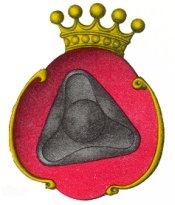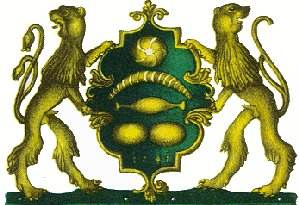
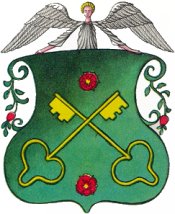
Coat of arms of locksmiths
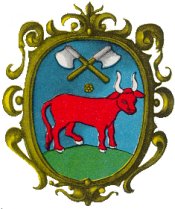
Coat of arms of butchers

Coat of arms of stonemasons
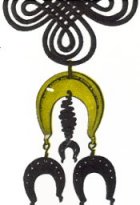 In the 9th century there was not a big difference between a farmer and a craftsman. However, some of the specialised craftsmen such as arms manufactures or jewellers may have worked in major fortified settlements, where was demand after their products. Beside them, pottery, glass makers, smiths and stonemasonry was in existence.
In the 9th century there was not a big difference between a farmer and a craftsman. However, some of the specialised craftsmen such as arms manufactures or jewellers may have worked in major fortified settlements, where was demand after their products. Beside them, pottery, glass makers, smiths and stonemasonry was in existence. In the 12th century Nitra had flourishing farming and was a prominent market place, where the craftsmen sold their goods in regular markets.
In the 13th century Nitra had a municipal spirit and September 2, 1248 was chartered. This enabled even deeper development of crafts and trade.
However, in 14th century Nitra was several times plundered by various troops and the situation in the town only slowly was getting back to the track. As for the crafts, smiths, millers, butchers, weavers, furriers, shoemakers and tailors manufactured their goods there. Craftsmen had respect in the town and since the second half of the 14th century some of them had been appeared in the town council.
In the times of the Turk wars Nitra became antiturkish fortility and demand after products of local craftsmen increased remarkably, because of the presence of the soldier. An another important part of their goods was sold at weekly markets and four seasonal fairs. In this era craftsmen got started to join in the guilds.
Guild - associations of the craftsmen of one craft in one town. Their operation was run by articles which determined scope of production and trade as much as quality, quantity of products and education of apprentices. The guilds appeared in Europe at the beginning of the 14th century.
The first guild in Nitra was that of shoemakers, in 1583, and followed in 
1585 - smiths, locksmiths and butchers
1593 - buttonmakers
1630 - furriers
Until the end of 17th century there were thirteen guilds in Nitra.
In the 18th century the following guilds worked in Nitra :
those connected to farming - millers, bakers, butchers
for household - stonemasons, smiths, locksmiths, jointers, pottery
for cloathing - weavers, blousemakers, tailors, furriers, buttonmakers, shoemakers, ropemakers, bootmakers and hatmakers.
The rest of the crafts (about 40 in Nitra), having just a few members, associated in joint guilds. Picture: coat of arms of the guild of the millers.
The crafts in the Middle Ages were surprisingly specialised and there were 150 - 220 crafts in existence.
The master worked in his workshop with journymen and apprentices and sold their goods predominantly at the markets. Only a few of them a shop of their own possesed. The most profitable craft was butchery.
In the19th century the guilds fell into a deep crisis. Since the guilds fixed the costs and quantity of the products and disqualified any competition, they became the brake of the progress. In 1872 the guilds were abolished. The craftsmen established various manufacturing corporations to protect themselves against those not being corporated and craftsmen from countryside and at the same time took care of the sick, the old and the youth. Nitra Industrial Corporation was founded in 1885.
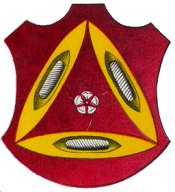
Coat of arms of weavers
